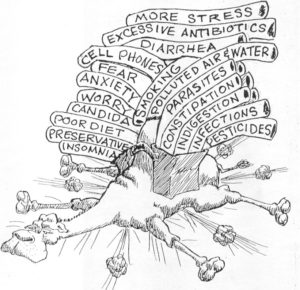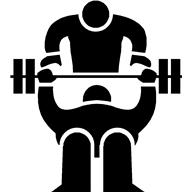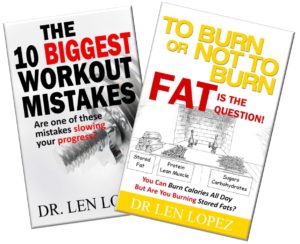Blog
Why the Intensity of Your Workout Matters
 The intensity of your workout has a lot to do with whether you are going to add lean muscle to your body or simply plateau and stay at where you are.
The intensity of your workout has a lot to do with whether you are going to add lean muscle to your body or simply plateau and stay at where you are.
Here are 3 principles of exercise you should know.
- Exercise is a form of Stress – can your body handle the additional stress?
- The more Intense Your Workout – the More Rest You Need!
- The more Intense your Workout – the More Testosterone (TT) and Growth Hormone (GH) you produce
Exercise is a form of stress! Can your body handle the additional stress you are placing on it? Some people are already stressed out enough in their daily life, which causing their stress hormones (cortisol and adrenaline) to constantly be elevated. So, adding another stressor (working out 3-4 times a week) to an already overloaded, over-worked body, may be too much for your body to handle. Keep in mind, constant stress will interfere with your body’s ability to produce Testosterone (TT) and Growth Hormone (GH), two hormones that help your body burn fat and add lean muscle.
The More Intense Your Workout – The more Rest You Need! Your workout is when you tear the body down, it’s called the ‘Catabolic’ breakdown phase. After a good hard workout or tough day at the office or a long day chasing kids, your body will require some additional rest and sleep. Make sure you get that, because it is the other 23 hours of the day that you get to activate what’s called your ‘Anabolic Repair/Rebuild phase.
The workout, the breakdown phase, is a small part of the process – it’s the Repair and Rebuild phase that truly gives you your ‘return on investment.’ So make sure you give your body the additional rest it needs from all the additional physical stress you are adding on to your body. Otherwise you could quickly be over-stressing and over-training your body, which is what causes a lot of plateau’s and sticking points.
The more Intense the Workout – the more Testosterone (TT) and Growth Hormone (GH) you produce. Testosterone and Growth Hormone are truly your fountain of youth hormones and are beneficial for you. They work to burn fat and add lean muscle. Walking is a form of exercise. It’s typically a low intensity activity for the majority of people and will only provide a small surge in TT and GH.
Jogging is more intense than walking and produces a larger surge in TT and GH, whereas weight training, sprinting, High Intensity Interval Training are higher intensity and trigger an even larger surge of TT and GH. So, depending on how intense your workout is will ultimately determine how big of a TT and GH surge you produce for yourself.
Fyi…Weight training or Progressive Resistance training as it is typically classified as, is an intense workout, if done properly. Unfortunately, there are a lot of people going to the gym who Don’t Stress their body enough to trigger the surge of TT and GH they are hoping to get. So, when you go to the gym you have to progressively increase something, (more weight, more reps/sets, less rest) so as to keep your body from plateauing. The typical way to increase the stress of your weight-lifting workout is to add more weight, doing more reps/sets, or decreasing the amount of rest between sets.
Five-pound curls will only take you so far. Once you can do 5 pound or 25 pound curls, and don’t push yourself past that stress point – your body will stay the same! It can already handle the task you are asking it to do, so you won’t get stronger, leaner or more fit. Your body will respond to how hard or easy you push yourself.
To sum it up, if you’ve hit a plateau or sticking point – look at the intensity of our workout. Yes, you could be following the wrong workout or wrong diet. But before you make those changes, look to see if it is an “operator error” in that you simply aren’t stressing your body enough when you workout! The simple tweak could be the intensity of your workout? Are you training hard enough to invoke the changes you want?
The graphics are from “To Burn or Not to Burn – FAT is the Question”



